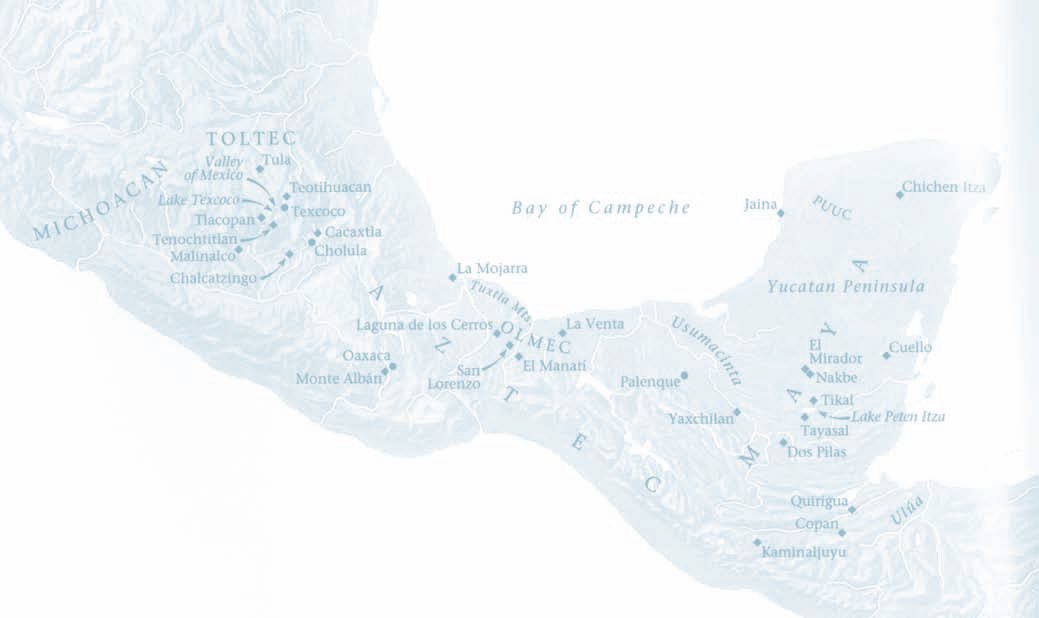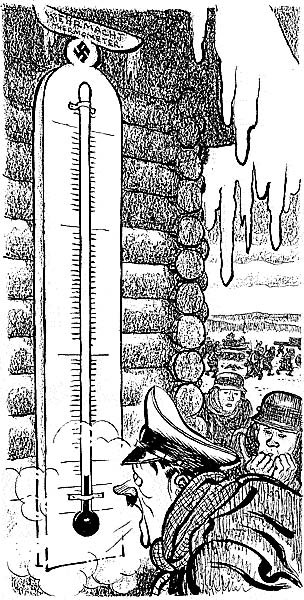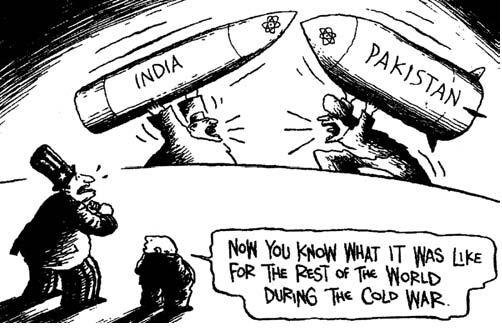|
Which form of government is best characterized
by one-party rule, censorship, and the use of
terror to maintain power?
(1) feudal
(2) limited monarchy
(3) parliamentary democracy
(4) totalitarian |
|
4. totalitarian |
| |
|
The term subsistence farming is best defined as
(1) redistributing farmland
(2) producing only enough crops to meet family
needs
(3) irrigating farmland
(4) exchanging farm products for money |
|
2. producing only enough crops to meet family
needs |
| |
|
• Separated the cultures of Europe and Asia
• Hindered, but did not prevent, invaders from
entering India
• Terraced to increase food production in South
America
Which geographic feature is being described in
these statements?
(1) river valleys (3) mountains
(2) steppes (4) tundra |
|
3. Mountains |
| |
|
One similarity found in both Egyptian and
Sumerian civilizations is that each developed a
(1) monotheistic religion (3) ziggurat
(2) compass (4) written language |
|
4. written language |
| |
|
Which text is essential to the practice of Islam?
(1) New Testament (3) Torah
(2) Analects (4) Qur’an (Koran) |
|
4. Qur'an (Koran) |
| |
|
The development of the concept of zero, the use
of a decimal system, and the Buddhist cave
paintings at Ajanta are all achievements of the
(1) Inca Empire
(2) Gupta Empire
(3) Roman Republic
(4) Kingdom of Songhai |
|
2. Gupta Empire |
| |
|
Which geographic factor directly influenced the
early interactions between China and Korea?
(1) location (3) arid climate
(2) monsoons (4) tropical savannas |
|
1. Location |
| |
|
What was the most important force in providing
unity and stability throughout western Europe
during the Middle Ages?
(1) church (3) inquisition
(2) nobility (4) military |
|
1. Church |
| |
|
Base your answer to question 12 on the passage
below and on your knowledge of social studies.
. . . As early as the struggle for the steppe he had spread the claim that Heaven had destined him as ruler; members of Mongol trading caravans spread stories intended to cause panic among the local populace; forged letters were fed to Sultan Muhammad which strengthened his mistrust of his Turkic units; freedom of religion was proclaimed; those who offered no resistance were promised that life and property would be spared; terrible destruction was threatened in the event of resistance; bloody examples were designed to spread fear and reduce the populace’s will to resist. . . .
— Paul Ratchnevsky, Genghis Khan: His Life and
Legacy, Blackwell Publishing
12 According to this passage, which Mongol practice
contributed greatly to their success?
(1) nomadic lifestyle
(2) superior horsemanship
(3) psychological warfare
(4) religious conversion |
|
3. psychological warfare |
| |
|
Which revolution in Europe is most closely
associated with the rise of capitalism, the
formation of guilds, and the growth of banking
systems?
(1) Commercial (3) Agrarian
(2) Scientific (4) Glorious |
|
1. Commercial |
| |
|
One way in which 14th-century Mali in Africa and
14th-century Venice in Italy are similar is that both
(1) were land-locked city-states
(2) developed economies based primarily on
agriculture
(3) became wealthy and powerful as a result of trade
(4) were centers for Islamic learning |
|
3. became wealthy and powerful as a result of trade |
| |
|
Base your answer to question 15 on the passage
below and on your knowledge of social studies.
. . . I conclude, therefore, with regard to being
feared and loved, that men love at their own free
will, but fear at the will of the prince, and that a
wise prince must rely on what is in his power and
not on what is in the power of others, and he must
only contrive to avoid incurring hatred, as has
been explained. . . .
15 This passage is most closely associated with the
ideas of
(1) Pope Urban II (3) John Calvin
(2) Niccolò Machiavelli (4) Thomas Malthus |
|
2. Niccolò Machiavelli |
| |
|
What was one cause of the Protestant
Reformation?
(1) revolt by the Moors in Spain
(2) passage of the Act of Supremacy in England
(3) call for the Council of Trent by Pope Paul III
(4) corruption among high officials of the Catholic Church |
|
4. corruption among high officials of the Catholic Church |
| |
|
During the Ming dynasty, why did China stop investing in overseas naval expeditions?
(1) Many foreigners were imitating Chinese culture.
(2) Chinese leaders saw little value in
exploration.
(3) People disagreed with Confucius’s demand for more territory.
(4) Chinese merchants were threatened by foreign competition. |
|
2. Chinese leaders saw little value in
exploration. |
| |

Which title best describes this map?
(1) Mesoamerican Cultural Areas
(2) South American Urban Areas
(3) Creation of the Spanish Viceroyalties
(4) Outposts of the Inca Empire |
|
1. Mesoamerican Cultural Areas |
| |
|
One way in which Sulieman the Magnificent,
Akbar the Great, and Louis XIV are similar is that
each was
(1) an important religious reformer
(2) a supporter of laissez-faire practices
(3) a leader of independence movements
(4) an absolute monarch |
|
4. an absolute monarch |
| |
|
A major impact of the Columbian exchange on
western Europe was the introduction of
(1) Christianity that led to the rise of the Catholic
Church
(2) new food crops that improved the European
diet
(3) new military technology that weakened local
rulers
(4) diseases that drastically reduced the
population of Europe |
|
2. new food crops that improved the European
diet |
| |
|
In the 1500s, the Portuguese seized trading ports
in Southeast Asia in an attempt to gain total
control of the spice trade.
Based on this statement, one goal of the
Portuguese was to establish
(1) a monopoly
(2) an embargo
(3) banking systems
(4) agricultural cooperatives |
|
1. a monopoly |
| |
|
The struggles for political independence in Latin
America during the early 1800s were most
directly influenced by the
(1) Berlin Conference
(2) doctrine of liberation theology
(3) American and French Revolutions
(4) writings of Count Camillo di Cavour |
|
3. American and French Revolutions |
| |
|
Base your answer to question 23 on the chart below and on your knowledge of social studies.
Philosopher Idea
Locke Natural rights — life, liberty, property
Montesquieu - Separation of powers
Voltaire - Freedom of thought, expression, and religion
23 Which period is most closely associated with the major ideas of these philosophers?
(1) Crusades (3) Reconquista
(2) Renaissance (4) Enlightenment |
|
4. Enlightenment |
| |
|
Which written work criticized the capitalist
system during the Industrial Revolution?
(1) Communist Manifesto by Karl Marx and Friedrich Engels
(2) “White Man’s Burden” by Rudyard Kipling
(3) The Wealth of Nations by Adam Smith
(4) The Origin of Species by Charles Darwin |
|
1. Communist Manifesto by Karl Marx and Friedrich Engels |
| |
|
Some developing countries rely on a single cash
crop such as cotton or sugar cane. The origin of
this practice can often be traced to the
(1) introduction of communism
(2) establishment of democratic governments
(3) colonization of the region
(4) movements to gain independence
|
|
3. colonization of the region |
| |
|
Which African group centralized its rule and
adopted new military techniques that challenged
the power of the British and the Boers in South
Africa?
(1) Zulu (3) Ibo
(2) Ashanti (4) Masai
|
|
1. Zulu |
| |
|
Which action did Japanese leaders take directly
following the visit of Commodore Perry in 1853?
(1) They attacked the British navy.
(2) They opened more ports to trade.
(3) They increased the power of the shogun.
(4) They allowed the importation of opium into
Japan. |
|
2. They opened more ports to trade. |
| |
|
Which event in Indian history could be
considered a result of the other three?
(1) Salt March
(2) Amritsar Massacre
(3) Sepoy Rebellion
(4) passage of the Independence Act
|
|
4. passage of the Independence Act |
| |
|
The assassination of Archduke Franz Ferdinand
was the immediate cause of
(1) the Franco-Prussian War
(2) the Russo-Japanese War
(3) World War I
(4) World War II
|
|
3. World War I |
| |
|
One way in which Atatürk of Turkey and Ho Chi
Minh of Vietnam are similar is that they both
(1) led nationalist movements in their countries
(2) formed communist governments
(3) kept their countries out of the United Nations
(4) led their countries during the Cold War
|
|
1. led nationalist movements in their countries |
| |
|
After World War II, the boundaries of newly
independent African countries were most often
based on
(1) existing ethnic settlement patterns
(2) divisions imposed under European imperialism
(3) mandates created under the United Nations
(4) locations of oil resources |
|
2. divisions imposed under European |
| |

This World War II cartoon is showing the
relationship between climate and the
(1) inability of Nazi forces to defeat the Soviet Union
(2) success of Allied troops after D-day
(3) efforts by Allied troops to control Berlin
(4) casualties suffered by the Soviet Union |
|
1. inability of Nazi forces to defeat the Soviet
Union |
| |
|
Base your answers to questions 33 and 34 on the
passage below and on your knowledge of social
studies.
. . . A river of people is flowing down the
boulevard. Some are very religious, with the men
separate from the women, and the women
covered in chadors [robes]. Some are not. Two
young men in jeans carry a large poster of
Khomeini, with his black turban and black
eyebrows standing out against the white
background. A middle-aged woman with big dark
glasses walks by, one fist in the air, the other
holding a cigarette. A group of college students
link arms and shout “Marg bar Shah!”—Death to
the Shah!—and they have the same sort of glad
expression that the shoe salesman had on the day
he asked Mama if she was American. But these
people also have another look—a kind of
exhilarated [overjoyed] astonishment, as if they
can’t believe no one is stopping them. . . .
— Tara Bahrampour
33 Which revolution is being described in this
passage?
(1) Mexican (3) Iranian
(2) Chinese (4) Nicaraguan |
|
3. Chinese |
| |
|
Base your answers to questions 33 and 34 on the
passage below and on your knowledge of social
studies.
. . . A river of people is flowing down the
boulevard. Some are very religious, with the men
separate from the women, and the women
covered in chadors [robes]. Some are not. Two
young men in jeans carry a large poster of
Khomeini, with his black turban and black
eyebrows standing out against the white
background. A middle-aged woman with big dark
glasses walks by, one fist in the air, the other
holding a cigarette. A group of college students
link arms and shout “Marg bar Shah!”—Death to
the Shah!—and they have the same sort of glad
expression that the shoe salesman had on the day
he asked Mama if she was American. But these
people also have another look—a kind of
exhilarated [overjoyed] astonishment, as if they
can’t believe no one is stopping them
34 Based on this passage, the protestors were
surprised because they had expected the
government to
(1) repress dissent (3) favor change
(2) accept criticism (4) go into exile |
|
1. repress dissent |
| |
|
One way in which Joseph Stalin’s five-year plans
and Mao Zedong’s Great Leap Forward are
similar is that both plans were
(1) efforts to reduce human rights violations
(2) policies to improve relations with the West
(3) methods used to control population growth
(4) attempts to increase agricultural and
industrial production |
|
4. attempts to increase agricultural and
industrial production |
| |
|
Which group of countries became Soviet
satellites after World War II?
(1) France, Spain, Great Britain
(2) Poland, Czechoslovakia, Hungary
(3) Switzerland, Austria, Belgium
(4) Turkey, Greece, Italy |
|
2. Poland, Czechoslovakia, Hungary |
| |

What is the main idea of this 2002 cartoon?
(1) The United States refuses to become
involved in another war.
(2) Nuclear proliferation continues to threaten
world peace.
(3) The Cold War conflict continues today.
(4) Pakistan is the dominant nuclear force in this
region. |
|
2. Nuclear proliferation continues to threaten
world peace. |
| |
|
The goal of Mikhail Gorbachev’s policies of
perestroika and glasnost was to
(1) expand collectivization and communes
(2) resume development of Soviet nuclear
weapons
(3) stimulate economic growth and political
discussion
(4) stop expansion of the North Atlantic Treaty
Organization (NATO) into Eastern Europe |
|
3. stimulate economic growth and political
discussion |
| |
|
The destruction of the rain forests in Latin
America is primarily due to the
(1) diseases carried by insects
(2) wildfires occurring during dry seasons
(3) devastation caused by high winds during the
tropical storm season
(4) demand for timber, farmland, and grazing
land
|
|
4. demand for timber, farmland, and grazing
land |
| |
|
Which Cold War event occurred last?
(1) Cuban missile crisis
(2) Korean War
(3) fall of the Berlin Wall
(4) Soviet invasion of Afghanistan
|
|
3. fall of the Berlin Wall |
| |
|
• Justinian issues a new code of laws.
• Greek culture is preserved.
• A split develops in Christianity between the
Roman Catholics and Orthodox Christians.
Which empire is most closely associated with
these statements?
(1) Byzantine (3) Mughal
(2) Persian (4) British
|
|
1. Byzantine |
| |
|
One way in which the ancient Inca Empire and
the Roman Empire are similar is that both
(1) fought rivals for control of the sea
(2) adopted Christianity as the state religion
(3) traded with other civilizations along the Silk
Road
(4) built a system of roadways throughout their
empires |
|
4. built a system of roadways throughout their
empires |
| |
|
Which heading is most appropriate for the partial
outline below that is related to conditions during
the 18th and 19th centuries?
I. __________________________________
A. Abundant natural resources
B. Advanced technology
C. Surplus of food
D. Stable economic and political conditions
(1) Factors Needed for Industrialization
(2) Forces That Caused the Rise of Fascism
(3) Objectives of the Green Revolution
(4) Results of the Glorious Revolution |
|
1. Factors Needed for Industrialization |
| |
|
One motive for Japanese expansion between 1905
and 1941 was to
(1) end reparation payments
(2) create a buffer zone
(3) spread Buddhism
(4) obtain natural resources |
|
4. obtain natural resources |
| |
|
What was one similarity between France during
the 1790s and Germany during the 1920s?
(1) Severe inflation contributed to the rise of
radical political groups.
(2) Scientific developments improved the
standard of living.
(3) Widespread intolerance of the Huguenots led
to human rights abuses.
(4) Military successes eliminated tensions with
neighboring countries. |
|
1. Severe inflation contributed to the rise of
radical political groups. |
| |
|
“Hungry Workers in Petrograd Demand Food”
“ ‘Peace, Land, and Bread’ Promised to All”
“World War I Soldiers Join the People’s Rebellion”
Which event is associated with these headlines?
(1) Tiananmen Square protests
(2) Soweto uprisings
(3) Russian Revolution
(4) Cuban Revolution |
|
3. Russian Revolution |
| |
|
Base your answer to the question on the graphic
organizer below and on your knowledge of social
studies.
Signing of the Treaty of Versailles
Collapse of the Soviet Union
Atomic bombing of Hiroshima
End of apartheid in South Africa
Which title best completes this graphic
organizer?
(1) Violations of the Universal Declaration of
Human Rights
(2) Turning Points of the 20th Century
(3) Reasons for Nonalignment
(4) Results of the Industrial Revolution
|
|
2. Turning Points of the 20th Century |
| |
|
• Pamphlet on the philosophy of Zionism
• Balfour Declaration
• Oslo Accords
These documents are most closely associated
with the controversy over
(1) efforts by the United Nations to restrict child
slavery and indentured servitude
(2) production of oil by the Organization of
Petroleum Exporting Countries (OPEC)
(3) trade agreements established by the World
Trade Organization (WTO)
(4) control of land in the Middle East by
Palestinians and Jews |
|
4. control of land in the Middle East by
Palestinians and Jews |
| |
